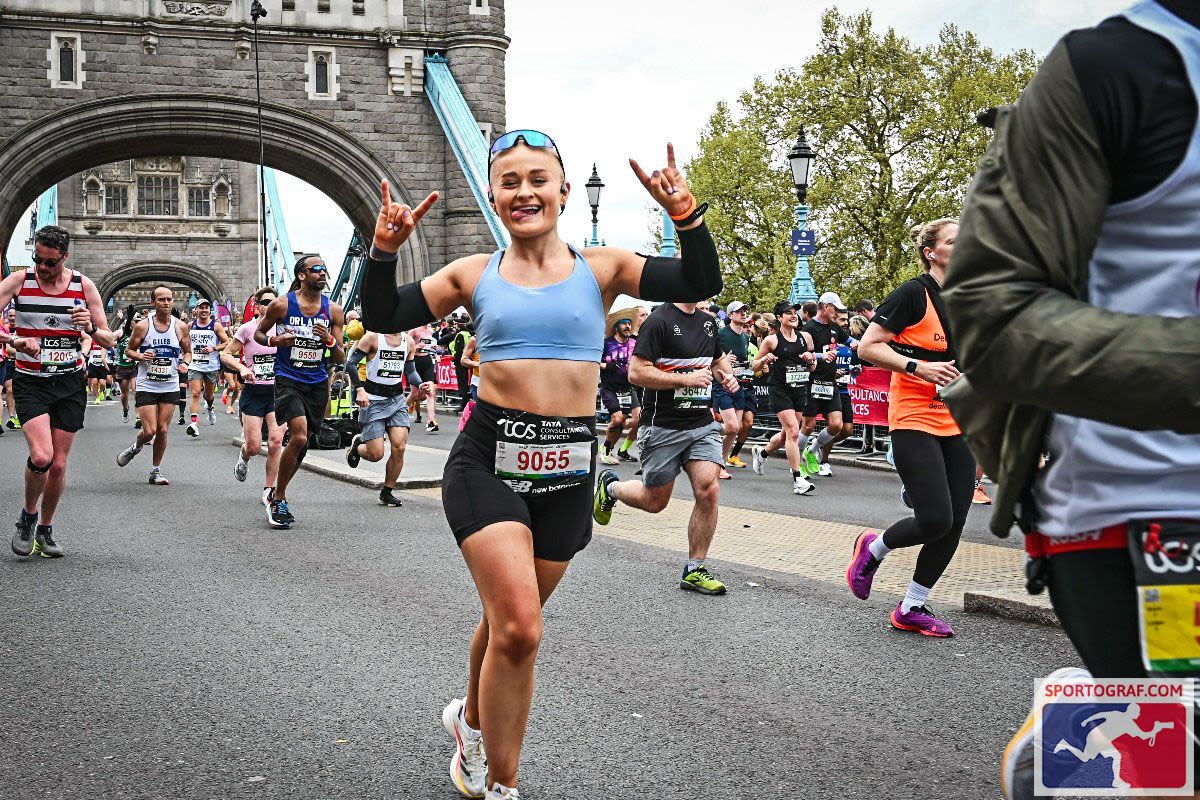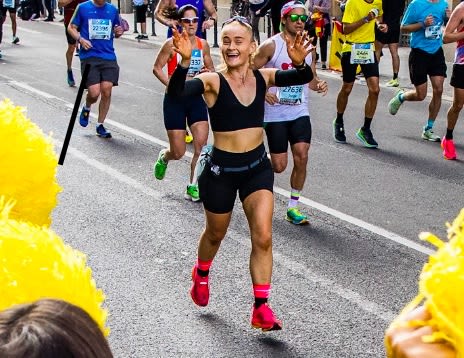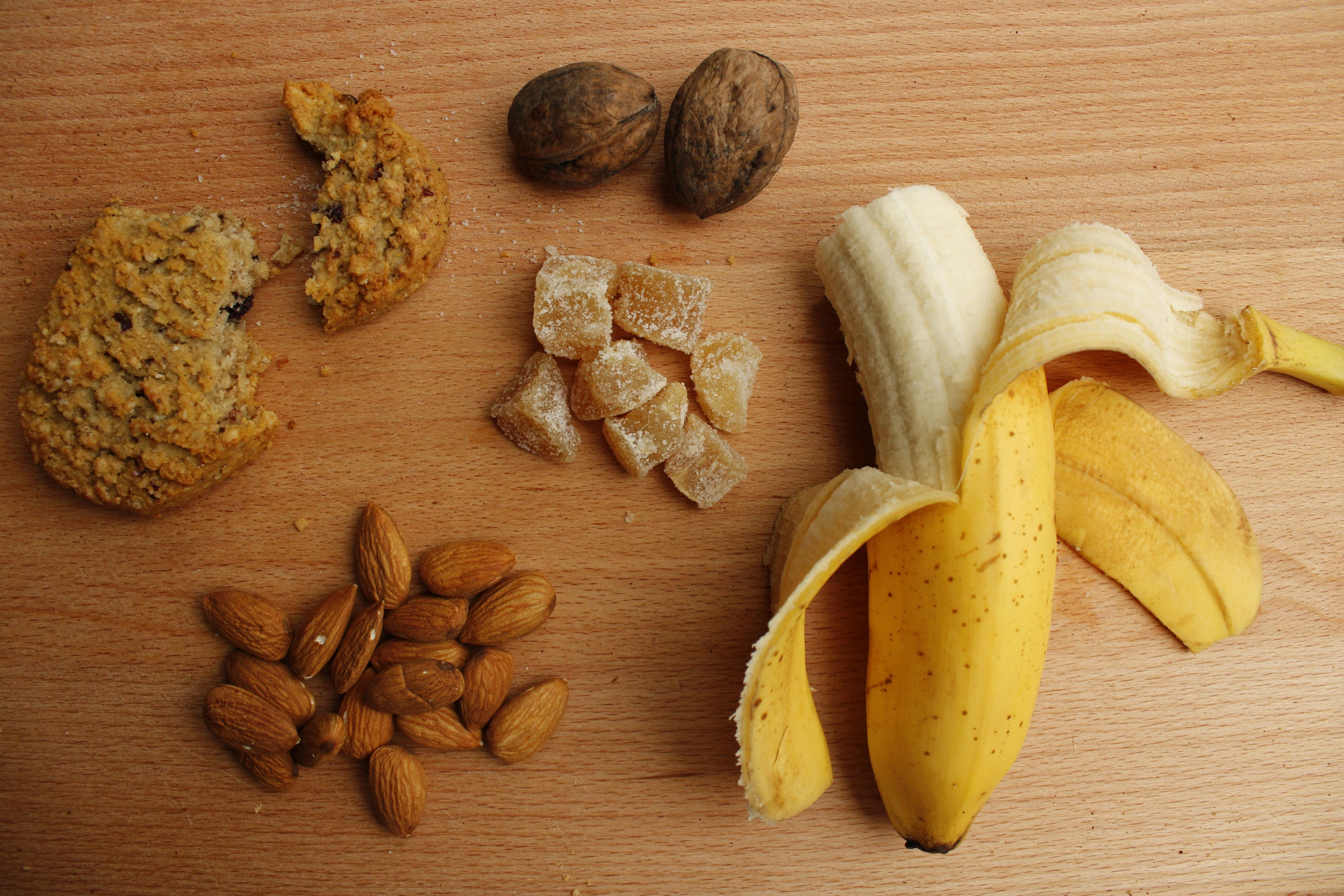The effects of marathoning on the female body.
What is RED-S and how is it affecting women?

More than 840,000 people have entered the London Marathon 2025 ballot, according to TCS.
The gender split is almost 50/50 with 49.03% of the marathon hopefuls being women (338,549). But how does this sport impact the female body?
Women are more likely to develop a condition called RED-S, leading to an increased risk of repetitive strain injuries and stress fractures.
RED-S: relative energy deficiency in sport is a syndrome of poor health that comes about from being in a sustained calorie deficit.
A subset of RED-S is known as the female athlete triad.
The three key elements that make up the triad are: missing menstrual periods, poor bone health and under-fuelling.
Paige Summerton, who is currently training for an Ironman and completed her most recent marathon in 3 hours 23 minutes, said the sport has improved her strength, physical fitness and mental health.
However, she has also suffered injuries as a direct result of the sport.
Summerton developed RED-S that led to a hip and thigh strain that left her out of running for around three months.
She believes she had RED-S for years before it was diagnosed. She said she lost her period and was over-training and under eating.
Summerton said she didn't take it seriously until it happened to her. She said: 'You hear about it and you know it can cause stress fractures but until it happened to me I was like, it will be fine, I can train through this.'
She added that these injuries are what made her 'properly recover' from RED-S.
Summerton said she recovered from RED-S with a 'really specific' eating and training plan.
She said she was no longer struggling with the disordered eating side of things.
Summerton said: 'Luckily for me, I was mentally well enough to increase my food and be happy with eating in a surplus, whereas a lot of people suffer from it that also have eating disorders.'
She detailed how she had to track the level of her heart rate hit in each training session, how long she was training for each day, how many steps she did each day, what she was eating and how much. Her coach then put all of this data into a graph and worked out exactly how much Summerton had to eat each day.
Summerton said: 'It wasn't an average estimate for the week, it was specific to the one calorie each day.
Maybe on a Monday it was around 3681 calories but on a Tuesday it might have been 3139 calories, it was very specific.'
Her coach gave her further guidance on how many steps she was allowed to do and the length and intensity of her training.
Summerton was restricted to only running five kilometres per week. All of these measures were intended to get her out of the long term energy deficit she had been in and help her recover her periods.
'It was a massive, massive change for me, but I was just so ready to commit to it,' said Summerton.
She added that she recovered in just under six weeks after not having had her period for 'four years or so'.
Summerton's coach wanted her to rest ideally but understood that it would be a very difficult adjustment mentally to go from exercising so often to doing no exercise at all, so she added strength training sessions of low intensity to Summerton's plan.
Summerton said the main food group her nutrition plan focussed on was carbs as her coach knew that is what her body had been lacking over the last few years.

Mary McCarthy, a marathoner who has just completed an ultramarathon said she has also struggled with RED-S.
McCarthy has had four stress fractures during her time running.
She said: 'The worst was my sacral grade four stress fracture in my hip which I did in my first year of uni.'
She then suffered another stress fracture on the opposite side of the base of her spine when she returned to running after six months off.
A grade four fracture means that the bone is visibly broken on an MRI.
McCarthy said she has never been formally diagnosed with RED-S but she believes she had all components of the female triad.
She said she has struggled with disordered eating which became an eating disorder when she was about 16 years old.
McCarthy described skipping meals and aiming to be on a very low level of calories before her training sessions and then eat a 'normal' dinner so her family did not realise there was a problem.
'I used to think I was winning if I had eaten 0-1 meals a day', said McCarthy.
She added: 'It all started from running, seeing all the girls that were winning were smaller than me, I felt I needed to be that size to have any chance at winning.'
In terms of missing menstrual periods McCarthy said she was on the hormonal birth control pill from the age of 15 to about 18 which made her periods difficult to track.
She said: 'I think that's what made RED-S less obvious.'
McCarthy said RED-S affected her mood as well.
She said: 'As you are left with very little energy' you can become 'massively irritable and depressed'.
McCarthy added: 'I struggled a lot with my eating and body dysmorphia but also my mental health.'
However, McCarthy is in a much better place now, and said things started to get better three years ago.
McCarthy said: 'I can now say hands down I do not suffer from any symptoms of RED-S and have a very healthy relationship with food and the way I see my body as an incredible thing that if I can fuel properly will take me to some crazy places.'
She said: 'After struggling for years with the way I saw my body and only wanting to be smaller, turning to binge drinking and poor habits, I finally found the love for running and sport again.'
McCarthy recently completed the London Marathon 2024, this was her first time racing in a championship division. She is SHREDDY's running trainer and has secured deals with VitaminWellUK.

Dr Mike Rossiter, a sports exercise and medicine consultant, said the injuries most associated with women who participate in endurance running are stress reactions and fractions.
He said RED-S is generally to do with nutritional balance, hormonal balance and training balance and it is particularly applicable to women due to their hormones.
Dr Rossiter said: 'One of the primary bone feeders in women is oestrogen. If you are late starting your periods or your periods are irregular, you may not be getting the oestrogen that you require, and that can have a negative effect on your bone health.'
He added that the combined birth control pill can be a problem as it affects women's natural oestrogen levels.
RED-S is also a particular concern for menopausal women.
Dr Rossiter said: 'As you get to the menopause your natural oestrogen will begin to diminish. So when you become menopausal, your oestrogen levels will drop off quite substantially.'
Hannah Walsh, a women's ultramarathon coach, said that strength training is more important for the women that she coaches in their 40s, 50s and 60s than younger women.
She said with these women it is more important to have a 'well rounded approach to training' to help prevent injuries.
Dr Rossiter has met competitive athletes who were happy to lose their menstrual cycles as they said they were 'inconvenient'.
He also said: 'The mood swings that may happen around the period can affect performance as well.'

GIF credit: Olivia Surguy
GIF credit: Olivia Surguy
Endurance training such as training for and running marathons can lead to fatigue. RED-S may also affect your mood which is why it is important to make sure you are properly fueling your body to obtain the positive mental health benefits from running.
Menstrual cycles. Endurance training can make your menstrual cycle unpredictable or disappear altogether. This is a symptom of RED-S.
The hip is an area that is commonly injured in women runners. Women generally have wider hips than men which can make hip gluteal strains more common. Women are also more at risk of gluteal tendinopathy and stress fractures in the hip joint and femur (thigh bone).
Women are more susceptible to stress fractures and repetitive strain injuries in their feet and ankles. One of the primary hormonal bone feeders in women is oestrogen, if women have low oestrogen levels or imbalanced hormones this can make them more likely to get a stress fracture.
Dr Rossiter said he has never met anyone who structures their training around their menstrual cycle.
He said most women will either accept that their period will affect their training or 'they will want to get rid of their periods because they don't want this fluctuation.'
Summerton described the week before her period as a 'hungry week' and said during that week she notices that her body needs a lot more food to sustain her training.
She said: 'You actually burn more energy being on your period, even if you don't train, so you just need that extra food regardless.'
Summerton stressed the importance of honouring this hunger and said that she tries to accept that her level of training may need to be a little lower while on her period.
McCarthy said she does not find her training is hugely affected by her cycle but wishes she kept a journal to look back on and spot potential trends.
She added that when running marathons and ultra-marathons her period delays itself until after the race, she believes due to the stress.
McCarthy said: 'I haven't done any races as an adult whilst being on my period, but in training it's always black shorts.'

Photo by Merve Sehirli Nasir on Unsplash
Photo by Merve Sehirli Nasir on Unsplash
Ms Walsh said running watches can be helpful to collect data about how your body is performing in training.
She uses data from these as well as a lengthy questionnaire to determine individual training plans for her athletes.
Walsh said: 'Nutrition is definitely something we talk a lot about during the coaching sessions.'
She added that she shares nutritional guidelines with her clients detailing 'how many calories they should be eating, how much fluid they should be drinking and how much sodium they should be taking on.'
Walsh said she thinks having a personalised running coach can help women train more effectively as it is tailored to the individual.
England Athletics has said that regular menstrual cycles are a sign of female hormonal health.
They added that the oral contraceptive pill can mask problems and symptoms of RED-S and so athletes should be making informed decisions about taking this.
The TCS London Marathon website has training plans for beginner, intermediate and advanced runners; this could be a more accessible option of a plan for people who cannot afford to consult a personalised running coach.
If you applied for a place in the 2025 London Marathon but are unsuccessful, there are a list of other options here.
If you are a woman currently training for a marathon or endurance race, watch out for the female triad symptoms of RED-S and consult a doctor if you think you may have it.
While not always immediately threatening to your training, RED-S could significantly affect your health and make you more at risk of suffering injuries in endurance sport.

